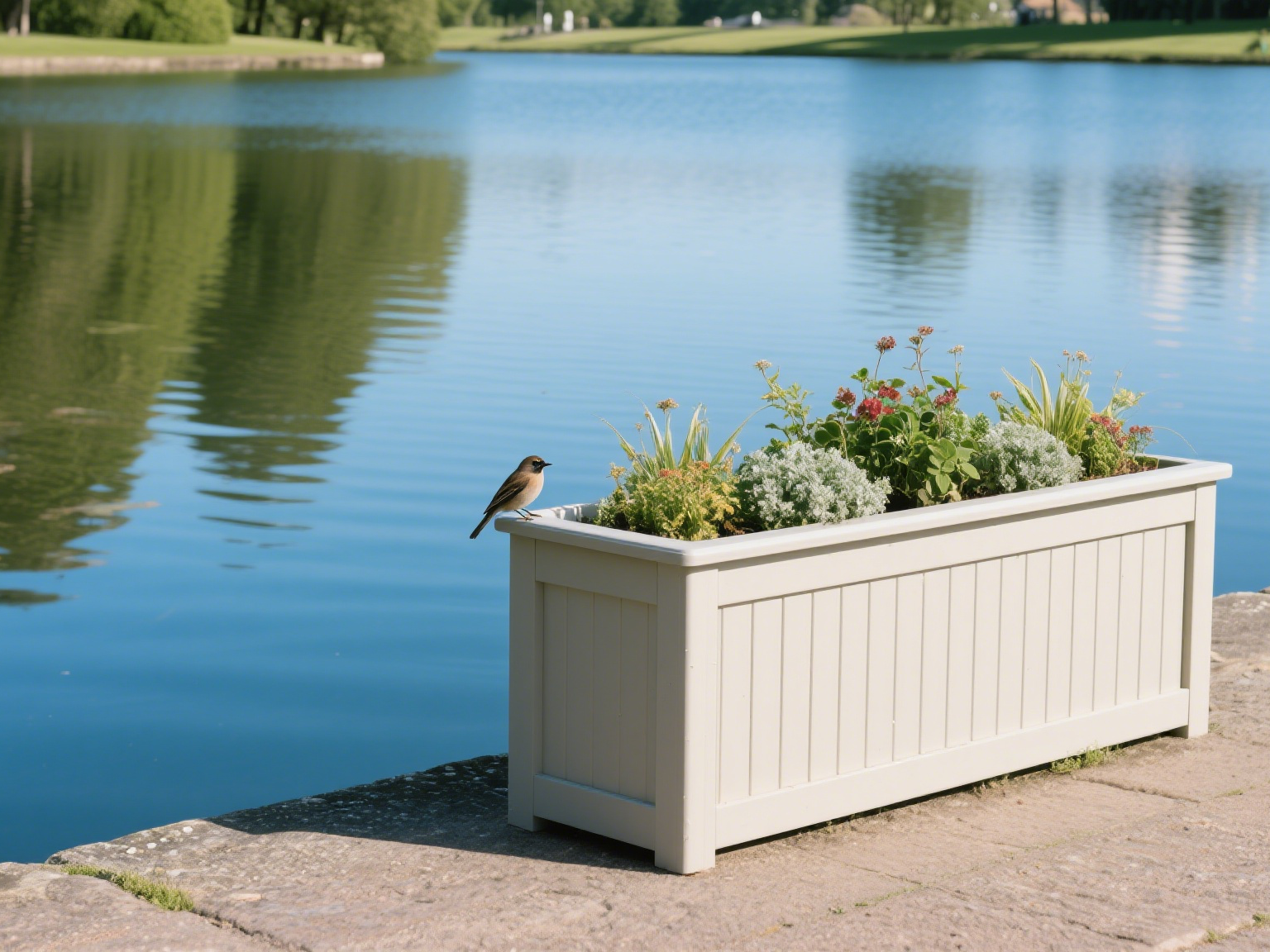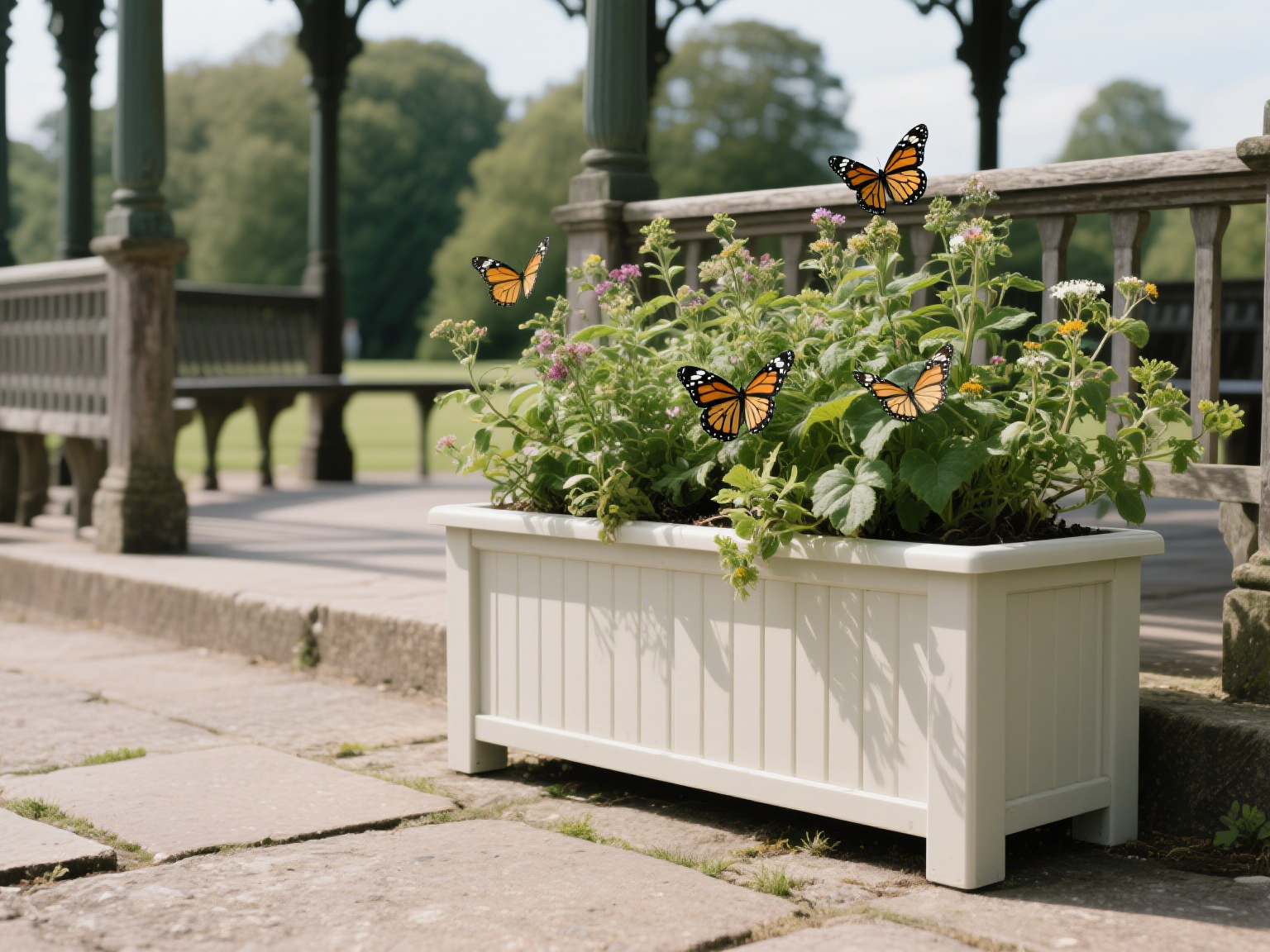In Copenhagen, Denmark, a city renowned worldwide for its green initiatives and sustainable development, lies the historic Frederiksberg Gardens. With the growth of the city and the increasing demand for a better ecological environment from its residents, the park faced the dual challenges of landscape renewal and ecological enhancement. PVC flower boxes, which combine practicality with environmental protection concepts, have emerged as the core force behind this ecological innovation, injecting new vitality into the park.
Copenhagen experiences a climate that is moist and rainy throughout the year. Traditional flower box materials are highly susceptible to moisture, rot, rust, and damage in such conditions. Frequent replacements not only consume a significant amount of manpower and resources but also run counter to the city’s environmental protection ethos. The eco-friendly PVC flower boxes selected for this park renovation are made from recyclable polyvinyl chloride materials. The production process strictly adheres to low-carbon standards, utilizing clean energy sources such as wind power to reduce the carbon footprint. Thanks to their exceptional weather resistance and waterproof properties, these flower boxes can stand firm in the wet and rainy environment, with a service life of several decades, greatly reducing resource consumption. When these flower boxes reach the end of their service life, they can be recycled and reprocessed, achieving a closed-loop of material recycling and truly maximizing resource utilization.

Entering the renovated Frederiksberg Gardens, one can see PVC flower boxes with simple designs and elegant colors everywhere. These flower boxes are no longer just simple plant containers but are ingeniously integrated into every corner of the park, complementing the winding paths, quaint pavilions, and clear lakes. The plants planted in the flower boxes have been carefully planned, mainly consisting of local shade-tolerant and moisture-resistant varieties in Denmark, such as Stachys byzantina and Achillea millefolium. These plants not only adapt well to the local climate, requiring minimal irrigation and fertilization, but also provide nectar sources for insects like bees and butterflies and attract birds to perch and inhabit. The plants in different flower boxes are arranged in a staggered manner, with harmonious color combinations, presenting different sceneries as the seasons change: a profusion of flowers in spring, lush greenery in summer, a riot of colors in autumn, and stark, elegant branches in winter, offering visitors a continuous visual feast.
The ecological transformation triggered by these PVC flower boxes has had far-reaching impacts. At the ecological level, the plants in the flower boxes and the PVC materials work in tandem. Through photosynthesis, the plants absorb carbon dioxide, release oxygen, and adsorb dust and harmful gases in the air, improving the air quality of the park. Meanwhile, the durability of the PVC flower boxes reduces energy consumption and waste generation during production and replacement, and their recyclable nature further promotes the development of the city’s circular economy. The once somewhat dated park is now full of vitality, becoming an important “green lung” in the urban ecosystem and contributing to Copenhagen’s carbon neutrality goals.

For the citizens and tourists of Copenhagen, the changes brought about by the PVC flower boxes are tangible. The citizens now enjoy a higher-quality leisure space. In the early morning, people jog along the paths beside the flower boxes, breathing in the fresh air. In the afternoon, the elderly sit on the benches surrounded by flower boxes, enjoying the sunshine and greenery. On weekends, parents bring their children to observe insects and learn about plants among the flower boxes, instilling environmental awareness in a natural setting. Tourists are attracted by the park’s unique ecological landscape and flock here to take photos, experiencing the green charm of Copenhagen. This not only enhances the city’s tourism appeal but also spreads the concept of environmental protection widely through people’s experiences and interactions.
The ecological renovation of Frederiksberg Gardens with PVC flower boxes represents a successful practice in Copenhagen’s urban ecological construction. It demonstrates that even seemingly ordinary flower boxes, when integrated with environmental protection and ecological concepts, can become crucial elements in improving the urban environment and enhancing the quality of life. They strike the perfect balance between protecting nature and serving the public, providing a valuable model for the ecological transformation of urban parks around the world.

Choosing our company’s PVC flower boxes means choosing to walk hand in hand with sustainable development! Our PVC flower boxes are crafted using industry-leading techniques, with strict control over every production process to ensure that the products possess both excellent environmental performance and outstanding durability. From the source control of materials to the full-life cycle management of products, we always adhere to the principles of green environmental protection, providing high-quality solutions for urban landscape upgrading and ecological construction. Whether it is an urban park, a community green space, or a commercial street, our PVC flower boxes can be tailored to local conditions to create unique green landscapes. We look forward to working with you to adorn cities with eco-friendly flower boxes and jointly write an ecological future!
